Mikołaj Małkiński
Advancing Generalization Across a Variety of Abstract Visual Reasoning Tasks
May 19, 2025Abstract:The abstract visual reasoning (AVR) domain presents a diverse suite of analogy-based tasks devoted to studying model generalization. Recent years have brought dynamic progress in the field, particularly in i.i.d. scenarios, in which models are trained and evaluated on the same data distributions. Nevertheless, o.o.d. setups that assess model generalization to new test distributions remain challenging even for the most recent models. To advance generalization in AVR tasks, we present the Pathways of Normalized Group Convolution model (PoNG), a novel neural architecture that features group convolution, normalization, and a parallel design. We consider a wide set of AVR benchmarks, including Raven's Progressive Matrices and visual analogy problems with both synthetic and real-world images. The experiments demonstrate strong generalization capabilities of the proposed model, which in several settings outperforms the existing literature methods.
Reasoning Limitations of Multimodal Large Language Models. A case study of Bongard Problems
Nov 02, 2024Abstract:Abstract visual reasoning (AVR) encompasses a suite of tasks whose solving requires the ability to discover common concepts underlying the set of pictures through an analogy-making process, similarly to human IQ tests. Bongard Problems (BPs), proposed in 1968, constitute a fundamental challenge in this domain mainly due to their requirement to combine visual reasoning and verbal description. This work poses a question whether multimodal large language models (MLLMs) inherently designed to combine vision and language are capable of tackling BPs. To this end, we propose a set of diverse MLLM-suited strategies to tackle BPs and examine four popular proprietary MLLMs: GPT-4o, GPT-4 Turbo, Gemini 1.5 Pro, and Claude 3.5 Sonnet, and four open models: InternVL2-8B, LLaVa-1.6 Mistral-7B, Phi-3.5-Vision, and Pixtral 12B. The above MLLMs are compared on three BP datasets: a set of original BP instances relying on synthetic, geometry-based images and two recent datasets based on real-world images, i.e., Bongard-HOI and Bongard-OpenWorld. The experiments reveal significant limitations of MLLMs in solving BPs. In particular, the models struggle to solve the classical set of synthetic BPs, despite their visual simplicity. Though their performance ameliorates on real-world concepts expressed in Bongard-HOI and Bongard-OpenWorld, the models still have difficulty in utilizing new information to improve their predictions, as well as utilizing a dialog context window effectively. To capture the reasons of performance discrepancy between synthetic and real-world AVR domains, we propose Bongard-RWR, a new BP dataset consisting of real-world images that translates concepts from hand-crafted synthetic BPs to real-world concepts. The MLLMs' results on Bongard-RWR suggest that their poor performance on classical BPs is not due to domain specificity but rather reflects their general AVR limitations.
Generalization and Knowledge Transfer in Abstract Visual Reasoning Models
Jun 16, 2024



Abstract:We study generalization and knowledge reuse capabilities of deep neural networks in the domain of abstract visual reasoning (AVR), employing Raven's Progressive Matrices (RPMs), a recognized benchmark task for assessing AVR abilities. Two knowledge transfer scenarios referring to the I-RAVEN dataset are investigated. Firstly, inspired by generalization assessment capabilities of the PGM dataset and popularity of I-RAVEN, we introduce Attributeless-I-RAVEN, a benchmark with four generalization regimes that allow to test generalization of abstract rules applied to held-out attributes. Secondly, we construct I-RAVEN-Mesh, a dataset that enriches RPMs with a novel component structure comprising line-based patterns, facilitating assessment of progressive knowledge acquisition in transfer learning setting. The developed benchmarks reveal shortcomings of the contemporary deep learning models, which we partly address with Pathways of Normalized Group Convolution (PoNG) model, a novel neural architecture for solving AVR tasks. PoNG excels in both presented challenges, as well as the standard I-RAVEN and PGM setups.
A Unified View of Abstract Visual Reasoning Problems
Jun 16, 2024Abstract:The field of Abstract Visual Reasoning (AVR) encompasses a wide range of problems, many of which are inspired by human IQ tests. The variety of AVR tasks has resulted in state-of-the-art AVR methods being task-specific approaches. Furthermore, contemporary methods consider each AVR problem instance not as a whole, but in the form of a set of individual panels with particular locations and roles (context vs. answer panels) pre-assigned according to the task-specific arrangements. While these highly specialized approaches have recently led to significant progress in solving particular AVR tasks, considering each task in isolation hinders the development of universal learning systems in this domain. In this paper, we introduce a unified view of AVR tasks, where each problem instance is rendered as a single image, with no a priori assumptions about the number of panels, their location, or role. The main advantage of the proposed unified view is the ability to develop universal learning models applicable to various AVR tasks. What is more, the proposed approach inherently facilitates transfer learning in the AVR domain, as various types of problems share a common representation. The experiments conducted on four AVR datasets with Raven's Progressive Matrices and Visual Analogy Problems, and one real-world visual analogy dataset show that the proposed unified representation of AVR tasks poses a challenge to state-of-the-art Deep Learning (DL) AVR models and, more broadly, contemporary DL image recognition methods. In order to address this challenge, we introduce the Unified Model for Abstract Visual Reasoning (UMAVR) capable of dealing with various types of AVR problems in a unified manner. UMAVR outperforms existing AVR methods in selected single-task learning experiments, and demonstrates effective knowledge reuse in transfer learning and curriculum learning setups.
ReModels: Quantile Regression Averaging models
May 18, 2024Abstract:Electricity price forecasts play a crucial role in making key business decisions within the electricity markets. A focal point in this domain are probabilistic predictions, which delineate future price values in a more comprehensive manner than simple point forecasts. The golden standard in probabilistic approaches to predict energy prices is the Quantile Regression Averaging (QRA) method. In this paper, we present a Python package that encompasses the implementation of QRA, along with modifications of this approach that have appeared in the literature over the past few years. The proposed package also facilitates the acquisition and preparation of data related to electricity markets, as well as the evaluation of model predictions.
One Self-Configurable Model to Solve Many Abstract Visual Reasoning Problems
Dec 15, 2023Abstract:Abstract Visual Reasoning (AVR) comprises a wide selection of various problems similar to those used in human IQ tests. Recent years have brought dynamic progress in solving particular AVR tasks, however, in the contemporary literature AVR problems are largely dealt with in isolation, leading to highly specialized task-specific methods. With the aim of developing universal learning systems in the AVR domain, we propose the unified model for solving Single-Choice Abstract visual Reasoning tasks (SCAR), capable of solving various single-choice AVR tasks, without making any a priori assumptions about the task structure, in particular the number and location of panels. The proposed model relies on a novel Structure-Aware dynamic Layer (SAL), which adapts its weights to the structure of the considered AVR problem. Experiments conducted on Raven's Progressive Matrices, Visual Analogy Problems, and Odd One Out problems show that SCAR (SAL-based models, in general) effectively solves diverse AVR tasks, and its performance is on par with the state-of-the-art task-specific baselines. What is more, SCAR demonstrates effective knowledge reuse in multi-task and transfer learning settings. To our knowledge, this work is the first successful attempt to construct a general single-choice AVR solver relying on self-configurable architecture and unified solving method. With this work we aim to stimulate and foster progress on task-independent research paths in the AVR domain, with the long-term goal of development of a general AVR solver.
A Review of Emerging Research Directions in Abstract Visual Reasoning
Mar 07, 2022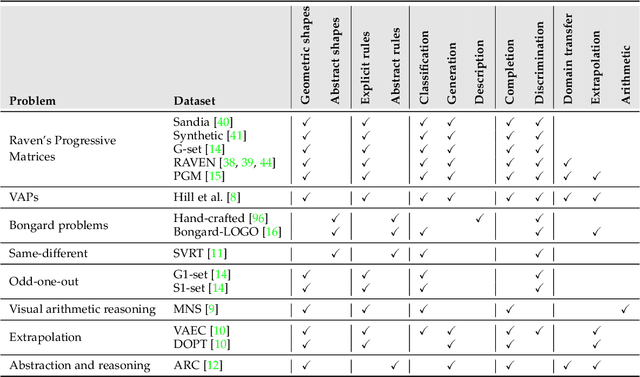


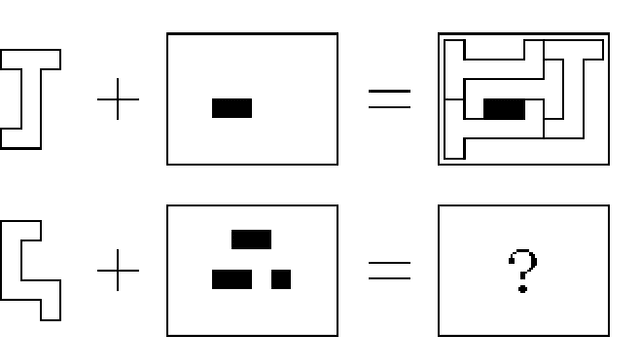
Abstract:Abstract Visual Reasoning (AVR) problems are commonly used to approximate human intelligence. They test the ability of applying previously gained knowledge, experience and skills in a completely new setting, which makes them particularly well-suited for this task. Recently, the AVR problems have become popular as a proxy to study machine intelligence, which has led to emergence of new distinct types of problems and multiple benchmark sets. In this work we review this emerging AVR research and propose a taxonomy to categorise the AVR tasks along 5 dimensions: input shapes, hidden rules, target task, cognitive function, and main challenge. The perspective taken in this survey allows to characterise AVR problems with respect to their shared and distinct properties, provides a unified view on the existing approaches for solving AVR tasks, shows how the AVR problems relate to practical applications, and outlines promising directions for future work. One of them refers to the observation that in the machine learning literature different tasks are considered in isolation, which is in the stark contrast with the way the AVR tasks are used to measure human intelligence, where multiple types of problems are combined within a single IQ test.
Deep Learning Methods for Abstract Visual Reasoning: A Survey on Raven's Progressive Matrices
Jan 28, 2022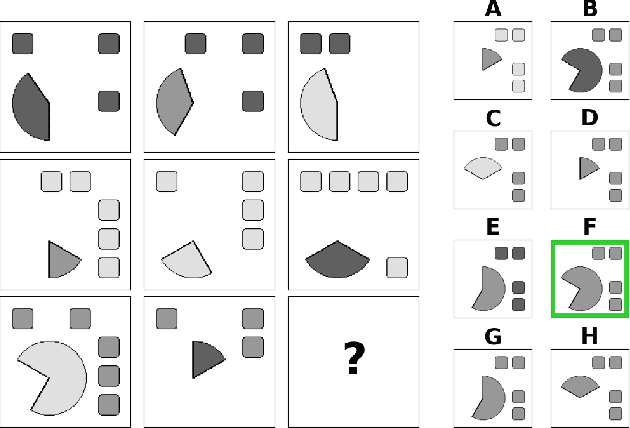
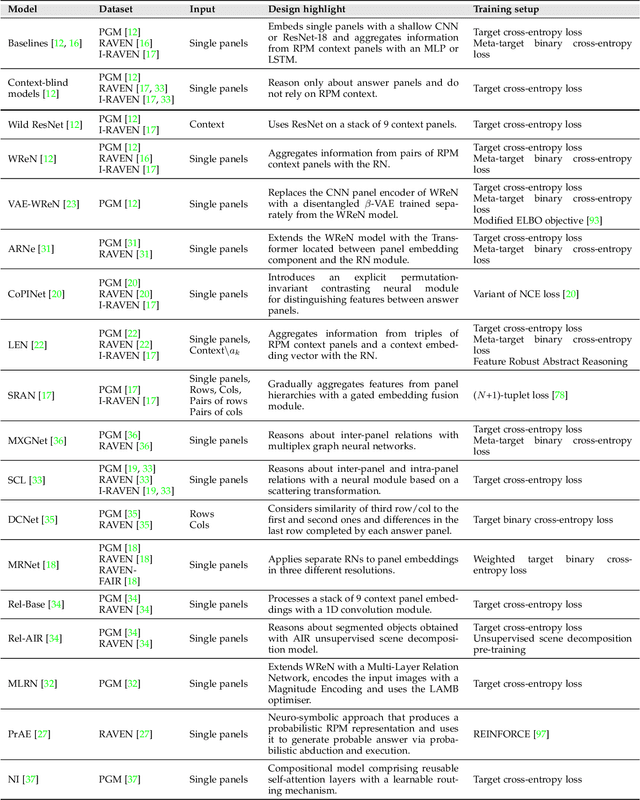
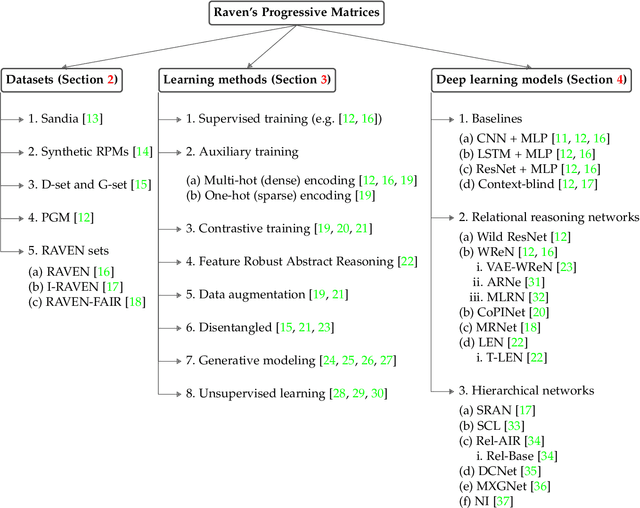
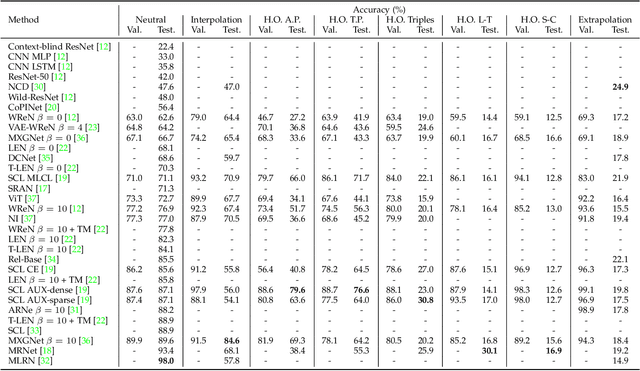
Abstract:Abstract visual reasoning (AVR) domain encompasses problems solving which requires the ability to reason about relations among entities present in a given scene. While humans, generally, solve AVR tasks in a ``natural'' way, even without prior experience, this type of problems has proven difficult for current machine learning systems. The paper summarises recent progress in applying deep learning methods to solving AVR problems, as a proxy for studying machine intelligence. We focus on the most common type of AVR tasks -- the Raven's Progressive Matrices (RPMs) -- and provide a comprehensive review of the learning methods and deep neural models applied to solve RPMs, as well as, the RPM benchmark sets. Performance analysis of the state-of-the-art approaches to solving RPMs leads to formulation of certain insights and remarks on the current and future trends in this area. We conclude the paper by demonstrating how real-world problems can benefit from the discoveries of RPM studies.
Multi-Label Contrastive Learning for Abstract Visual Reasoning
Dec 03, 2020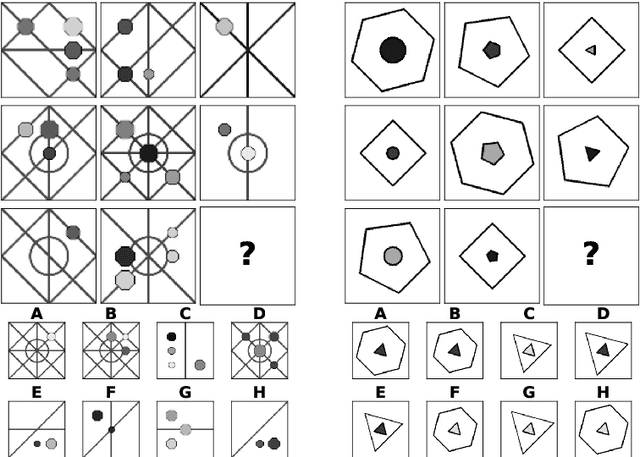
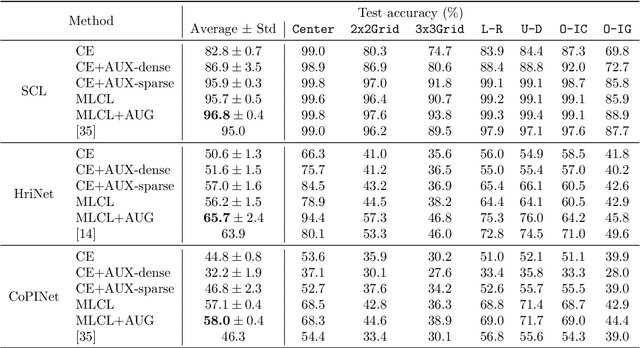
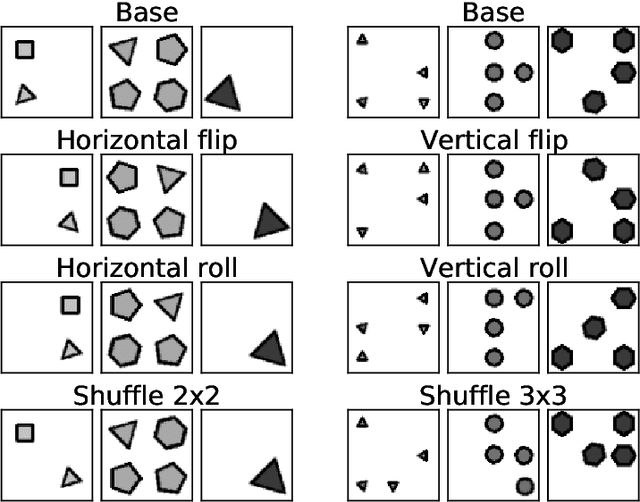

Abstract:For a long time the ability to solve abstract reasoning tasks was considered one of the hallmarks of human intelligence. Recent advances in application of deep learning (DL) methods led, as in many other domains, to surpassing human abstract reasoning performance, specifically in the most popular type of such problems - the Raven's Progressive Matrices (RPMs). While the efficacy of DL systems is indeed impressive, the way they approach the RPMs is very different from that of humans. State-of-the-art systems solving RPMs rely on massive pattern-based training and sometimes on exploiting biases in the dataset, whereas humans concentrate on identification of the rules / concepts underlying the RPM (or generally a visual reasoning task) to be solved. Motivated by this cognitive difference, this work aims at combining DL with human way of solving RPMs and getting the best of both worlds. Specifically, we cast the problem of solving RPMs into multi-label classification framework where each RPM is viewed as a multi-label data point, with labels determined by the set of abstract rules underlying the RPM. For efficient training of the system we introduce a generalisation of the Noise Contrastive Estimation algorithm to the case of multi-label samples. Furthermore, we propose a new sparse rule encoding scheme for RPMs which, besides the new training algorithm, is the key factor contributing to the state-of-the-art performance. The proposed approach is evaluated on two most popular benchmark datasets (Balanced-RAVEN and PGM) and on both of them demonstrates an advantage over the current state-of-the-art results. Contrary to applications of contrastive learning methods reported in other domains, the state-of-the-art performance reported in the paper is achieved with no need for large batch sizes or strong data augmentation.
 Add to Chrome
Add to Chrome Add to Firefox
Add to Firefox Add to Edge
Add to Edge